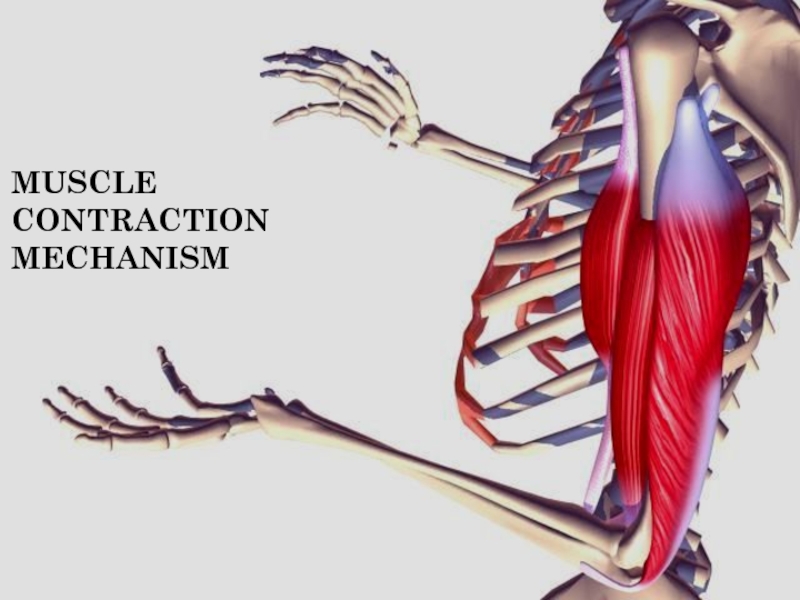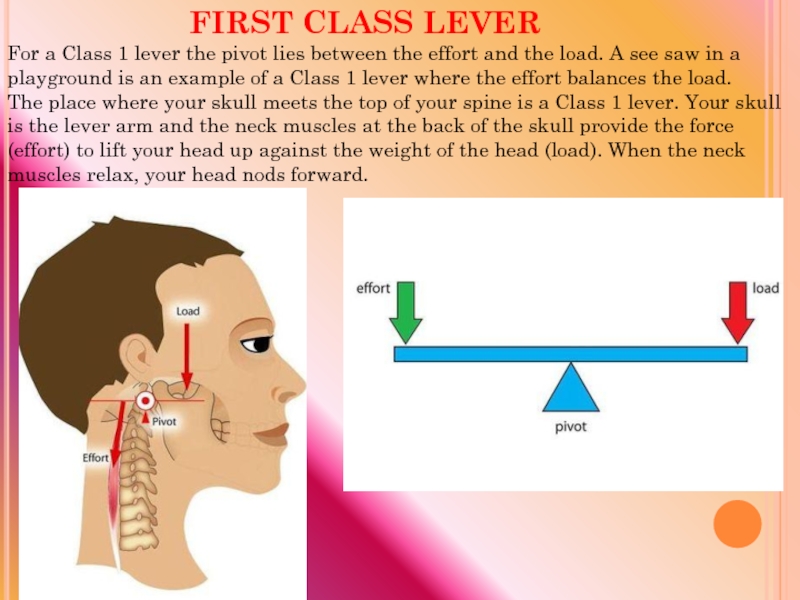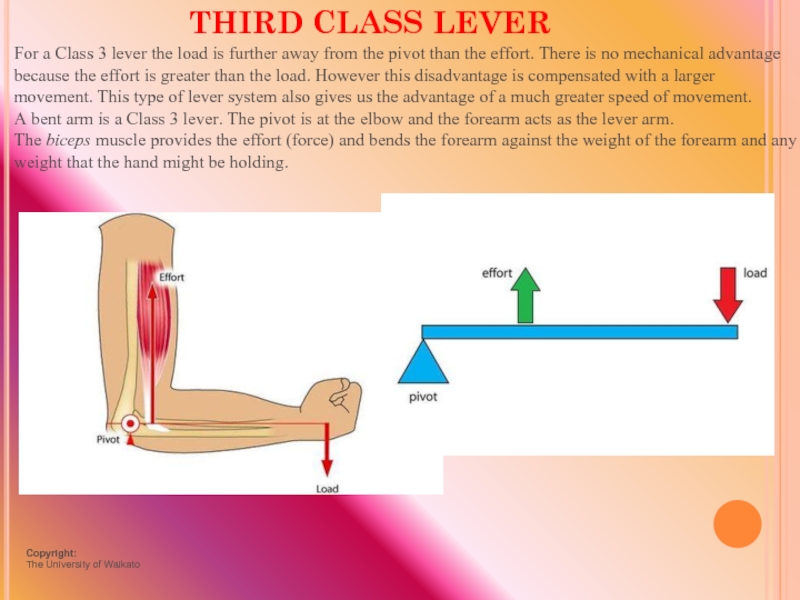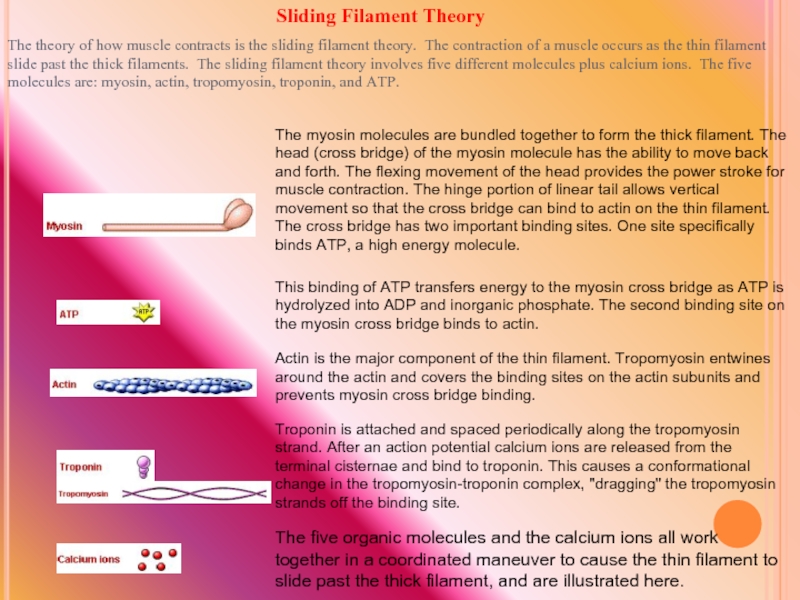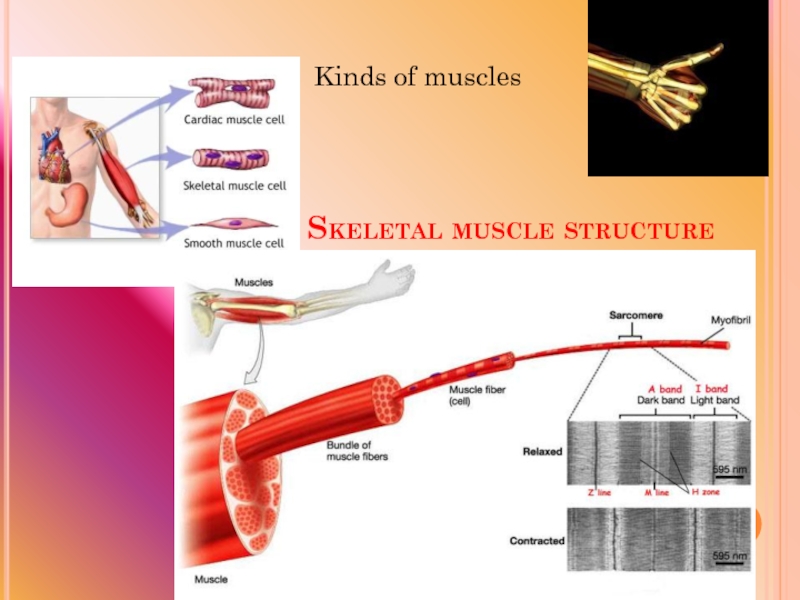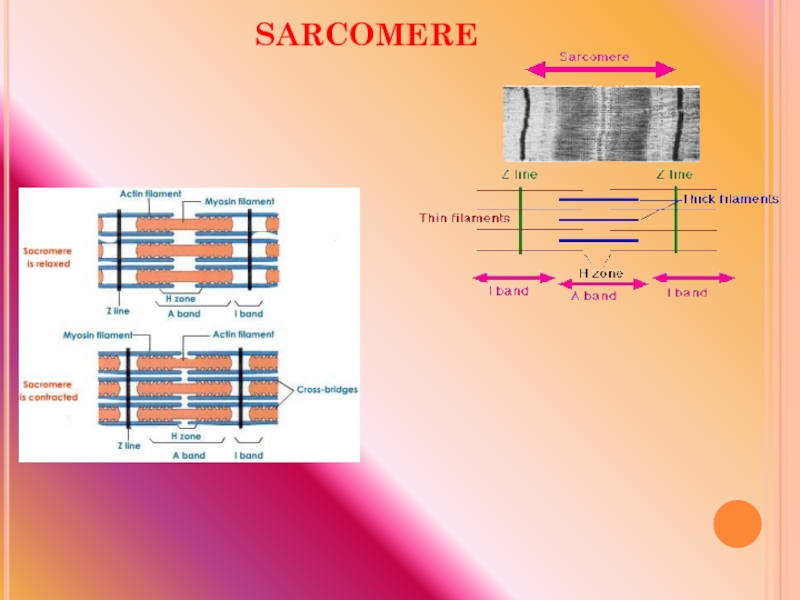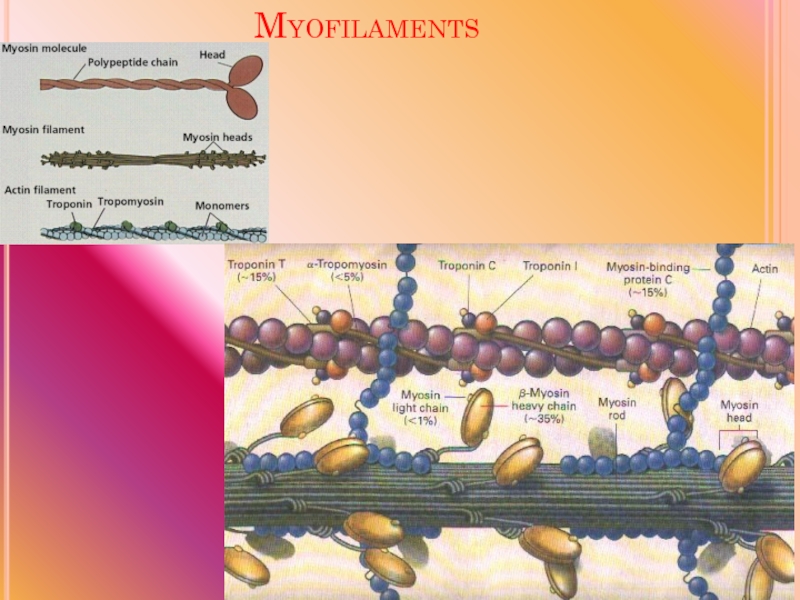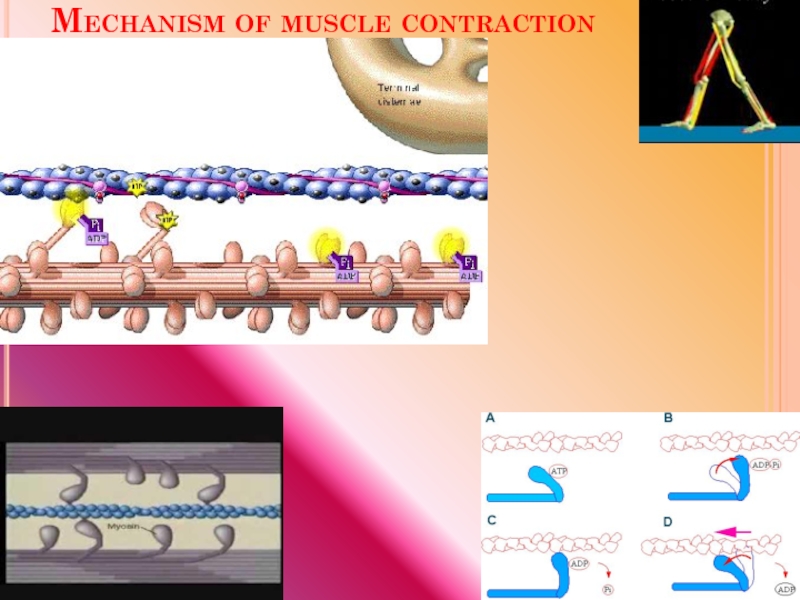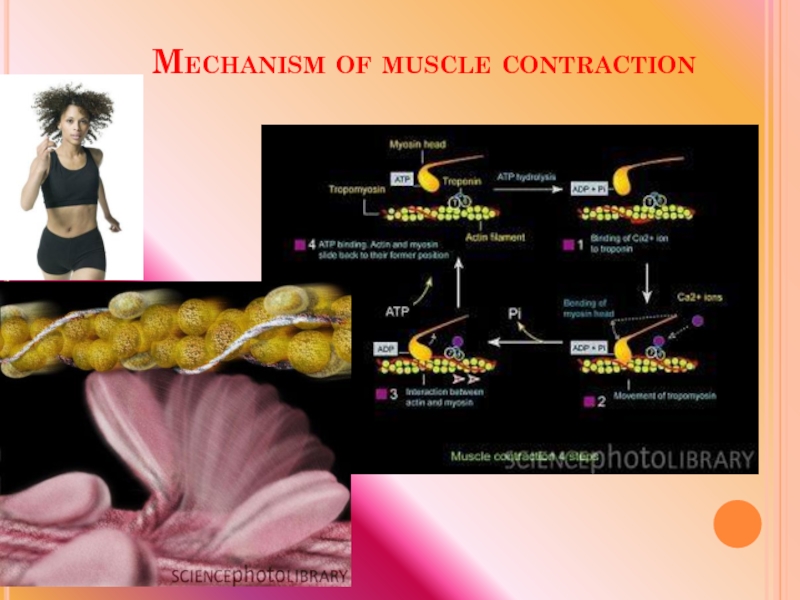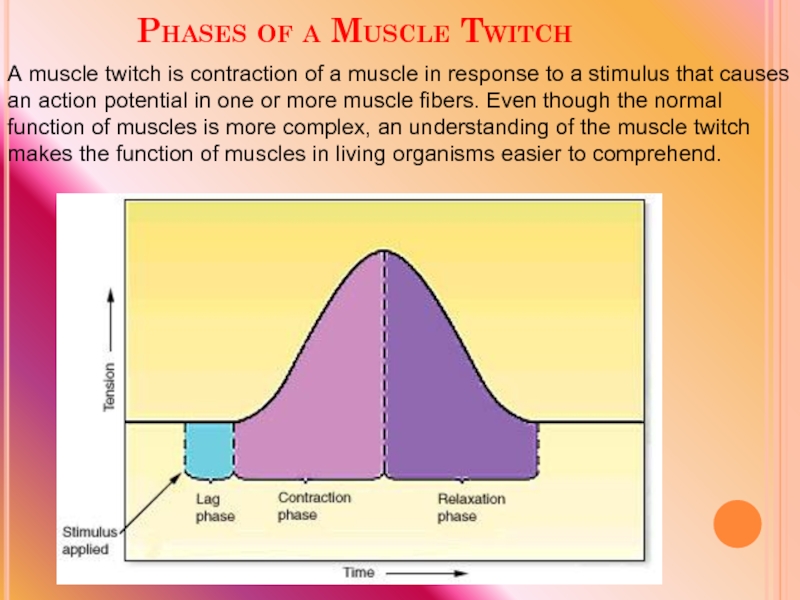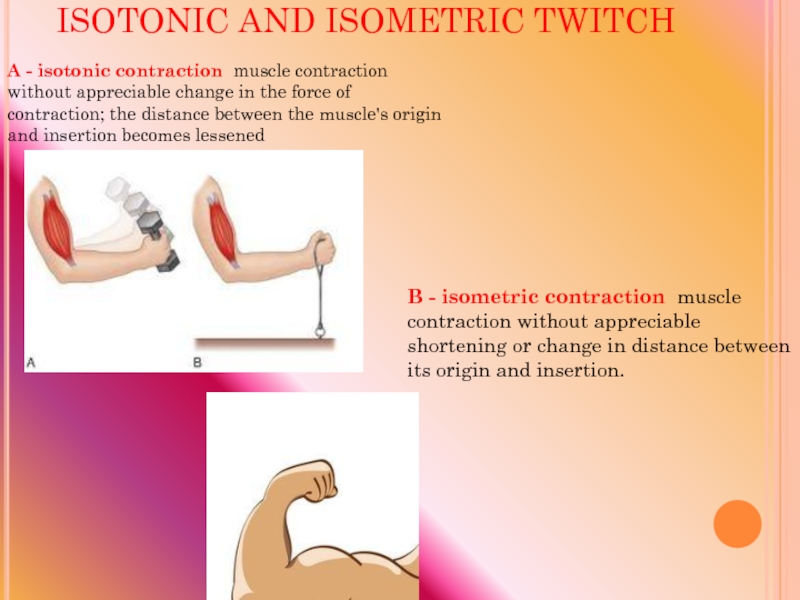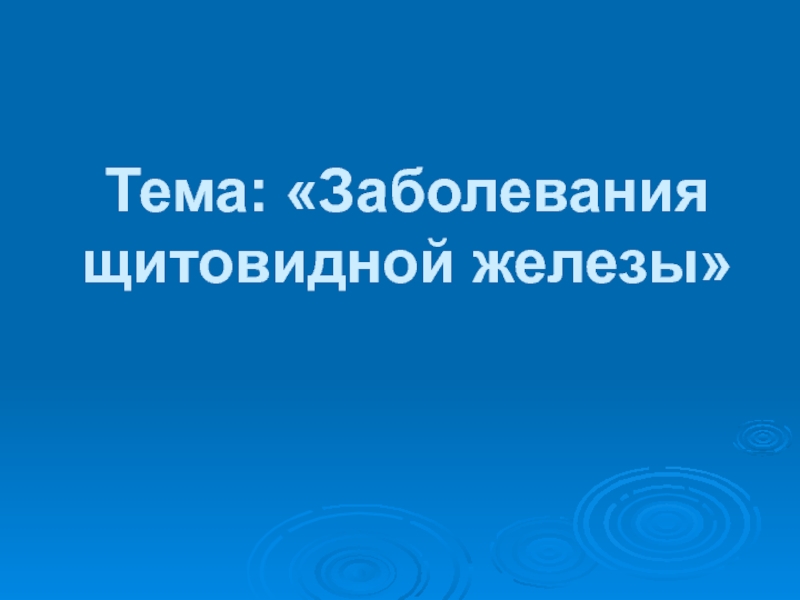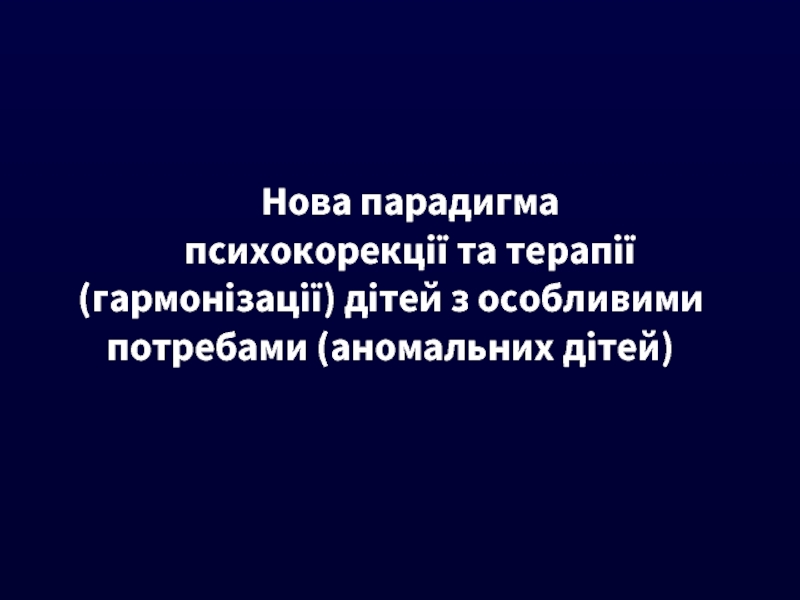- Главная
- Разное
- Дизайн
- Бизнес и предпринимательство
- Аналитика
- Образование
- Развлечения
- Красота и здоровье
- Финансы
- Государство
- Путешествия
- Спорт
- Недвижимость
- Армия
- Графика
- Культурология
- Еда и кулинария
- Лингвистика
- Английский язык
- Астрономия
- Алгебра
- Биология
- География
- Детские презентации
- Информатика
- История
- Литература
- Маркетинг
- Математика
- Медицина
- Менеджмент
- Музыка
- МХК
- Немецкий язык
- ОБЖ
- Обществознание
- Окружающий мир
- Педагогика
- Русский язык
- Технология
- Физика
- Философия
- Химия
- Шаблоны, картинки для презентаций
- Экология
- Экономика
- Юриспруденция
Muscle contraction mechanism презентация
Содержание
- 1. Muscle contraction mechanism
- 2. For a Class 1 lever the pivot
- 3. SECOND CLASS LEVER For the Class 2
- 4. For a Class 3 lever the load
- 5. The theory of how muscle contracts
- 6. Skeletal muscle structure Kinds of muscles
- 7. sarcomere
- 8. Myofilaments
- 9. Mechanism of muscle contraction
- 10. Mechanism of muscle contraction
- 11. Phases of a Muscle Twitch A muscle
- 12. ISOTONIC AND ISOMETRIC TWITCH A - isotonic
- 13. concentric contraction contraction resulting in shortening of
Слайд 2For a Class 1 lever the pivot lies between the effort
The place where your skull meets the top of your spine is a Class 1 lever. Your skull is the lever arm and the neck muscles at the back of the skull provide the force (effort) to lift your head up against the weight of the head (load). When the neck muscles relax, your head nods forward.
FIRST CLASS LEVER
Слайд 3SECOND CLASS LEVER
For the Class 2 lever the load is between
Standing on tip toes is a Class 2 lever. The pivot is at your toe joints and your foot acts as a lever arm. Your calf muscles and achilles tendon provide the effort when the calf muscle contracts. The load is your body weight and is lifted by the effort (muscle contraction).
Слайд 4For a Class 3 lever the load is further away from
THIRD CLASS LEVER
Copyright:
The University of Waikato
Слайд 5 The theory of how muscle contracts is the sliding filament theory.
Sliding Filament Theory
Слайд 11Phases of a Muscle Twitch
A muscle twitch is contraction of a muscle in
Слайд 12ISOTONIC AND ISOMETRIC TWITCH
A - isotonic contraction muscle contraction without appreciable
B - isometric contraction muscle contraction without appreciable shortening or change in distance between its origin and insertion.
Слайд 13
concentric contraction contraction resulting in shortening of a muscle, used to perform
eccentric contraction contraction in the presence of a resistive force that results in elongation of a muscle, used to perform negative work or to decelerate a body part. It is less metabolically demanding than aconcentric contraction but may cause disruption of associated connective tissue with delayed soreness or frank injury if it occurs in an unaccustomed manner. Called also lengthening contraction.
